Cutting CO2 emissions not top priority for Giant Mine clean-up, but official says they'll 'do our best'
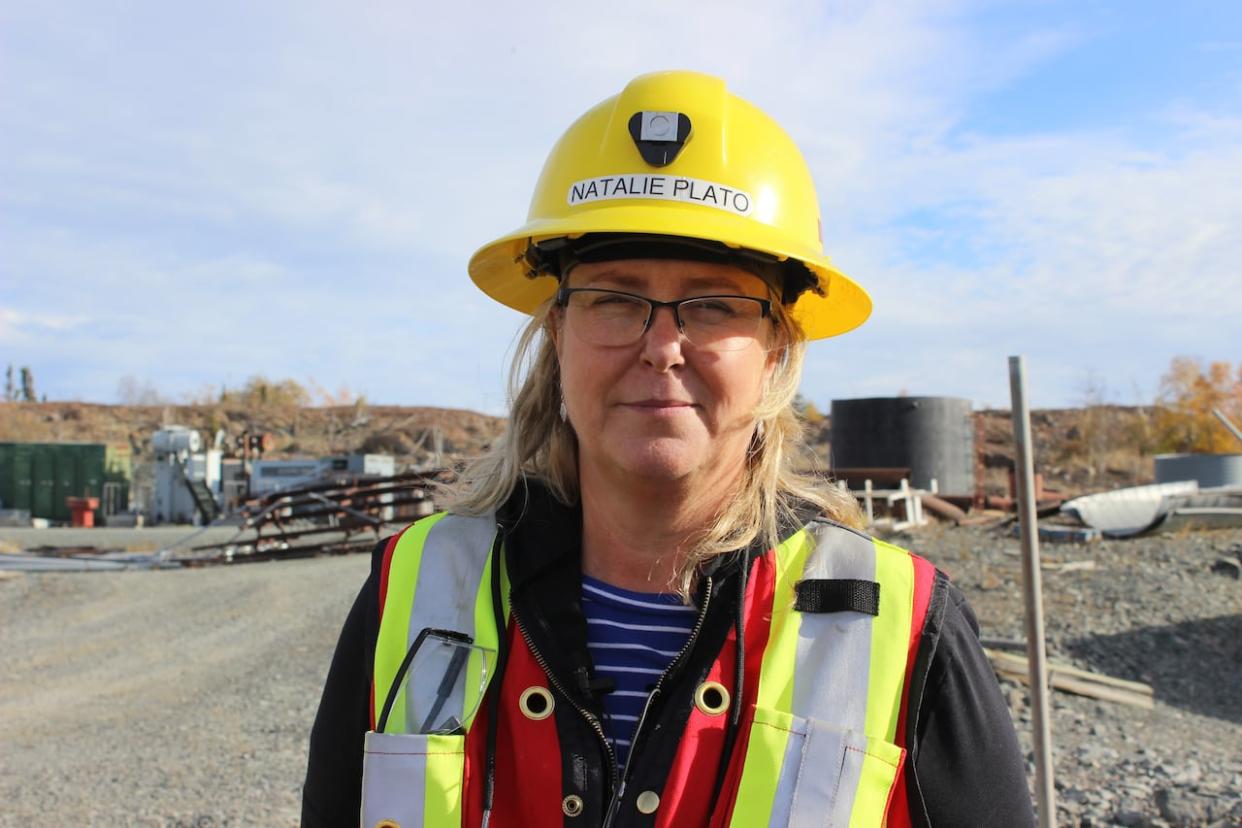
The deputy director of the Giant Mine remediation project in the N.W.T. says reducing greenhouse gas emissions isn't the top priority for her team, but they are taking steps to reduce them where possible.
"Our number-one objective is to protect the environment from the contaminants," said Natalie Plato. "But … we know [reducing emissions] is a priority as the government of a whole, so we're going to do our best."
The remediation project started calculating its greenhouse gas emissions in 2021. In that fiscal year, it says it emitted 4.9 kilotonnes of carbon dioxide equivalent into the air. The following year, 2022-2023, it emitted 4.1 kilotonnes. The project team confirmed Monday its annual report that year, however, contained a typo which inaccurately suggests its emissions were half of that — 2.1 kilotonnes — instead.
An audit from Canada's environmental watchdog released last month found Giant Mine isn't doing enough to cut back on greenhouse gas emissions. It found the federal government, which is responsible for the cleanup, hadn't developed an official plan to reduce emissions, nor had it developed a "credible and complete" estimate about emissions to come from the remediation phase.
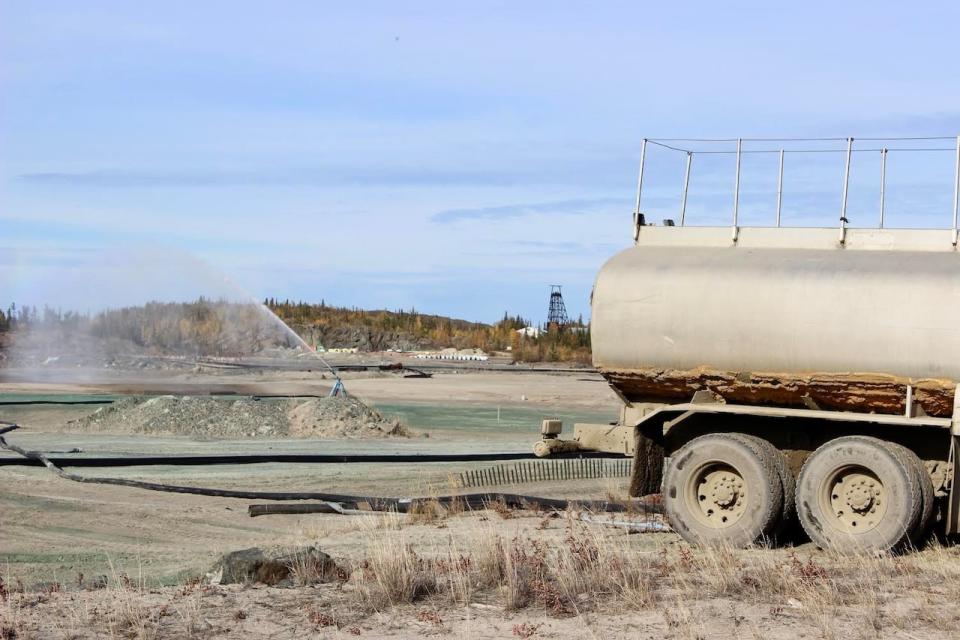
A truck pumps water into a sprayer that suppresses dust from a tailings pond at the Giant Mine remediation site, on the west side of the Ingraham Trail. (Liny Lamberink/CBC)
Asked about the audit's findings on emissions credibility in a May 16 interview, Plato responded: "Huh, I don't know about that … I would counter and say I think it's pretty credible."
In an email, Plato later followed up saying the project tracks and reports on the project's emissions, but does not have predictions or "forward-looking" estimates about what they'll be.
The emission figures are small when stacked up against what is produced by an operational N.W.T. mine, and another remediation project in the Yukon.
The clean up at Yukon's Faro mine is expected to produce 194 kilotonnes of emissions per year (a review board has said all of those emissions need to be offset). The N.W.T.'s Diavik mine, meanwhile, emitted about 200 kilotonnes of carbon dioxide equivalent in 2019 and 2020.
Plato said a new water treatment plant being built is a good example of the Giant Mine project's commitment to reducing emissions because it'll use a biomass heating system instead of using some type of fuel.
The project hasn't instituted a requirement for using electric vehicles, because Plato said they "don't really exist" in the heavy equipment world yet, but she said the team is "open" to installing chargers and encouraging contractors with lighter vehicles to make the switch. There's one electric truck on site, said Plato.
Committed to perpetual care plan
The recent audit by the federal commissioner of environment and sustainable development, and the Giant Mine Oversight Board (GMOB)'s recent annual report, each noted the remediation project still doesn't have a perpetual care plan. The project was supposed to have such a plan by 2020, outlining how the site would be cared for once remediation was complete.
Plato acknowledged the project had not met that timeline.
"We chose not to meet that timeline because developing a perpetual care plan before you actually have a remediation plan just seems a bit ludicrous. Ludicrous is my opinion."
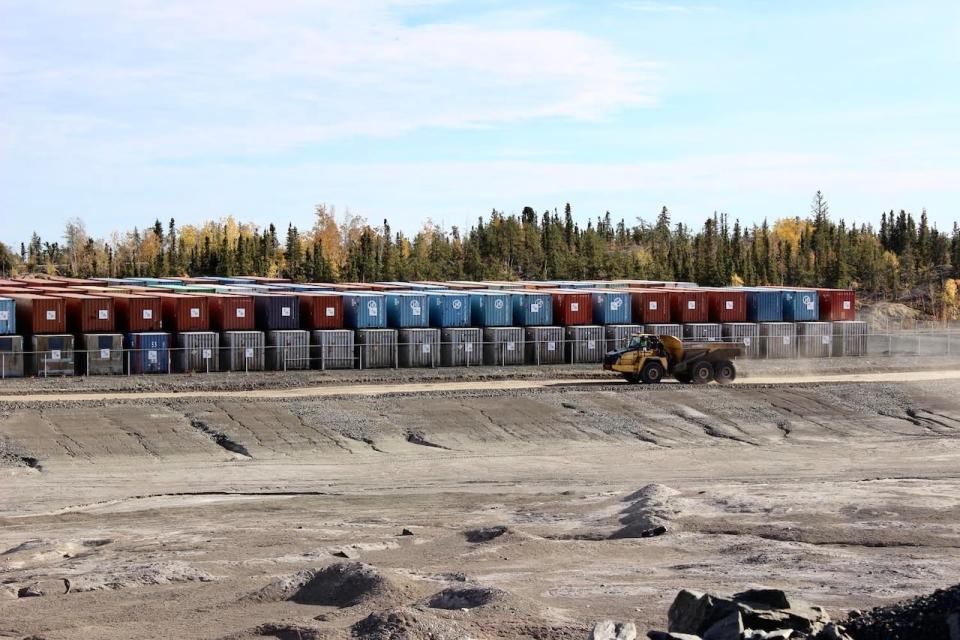
A dump truck drives past a vast sea of of shipping containers, which now store Giant Mine's infamous gold roaster, in September 2022. (Liny Lamberink/CBC)
Plato said the project was looking for a contractor to develop a perpetual care plan. They expected, as of mid-May, to award the contract in a couple of weeks. Plato said the plan would be done by 2025 or 2026, but with remediation expected to last until 2038, that they had lots of time.
"People shouldn't worry, we are committed, 100 per cent committed, to a perpetual care plan."
Plato responds to evacuation criticism
Plato also defended the remediation project's handling of last year's wildfire evacuation, saying she felt the team had done a "really good job."
Confronted with a city-wide evacuation in Yellowknife, the project's director told CBC News last summer the site was shut down, it had been evacuated, and contractors were pivoting to help with a massive firefighting effort.
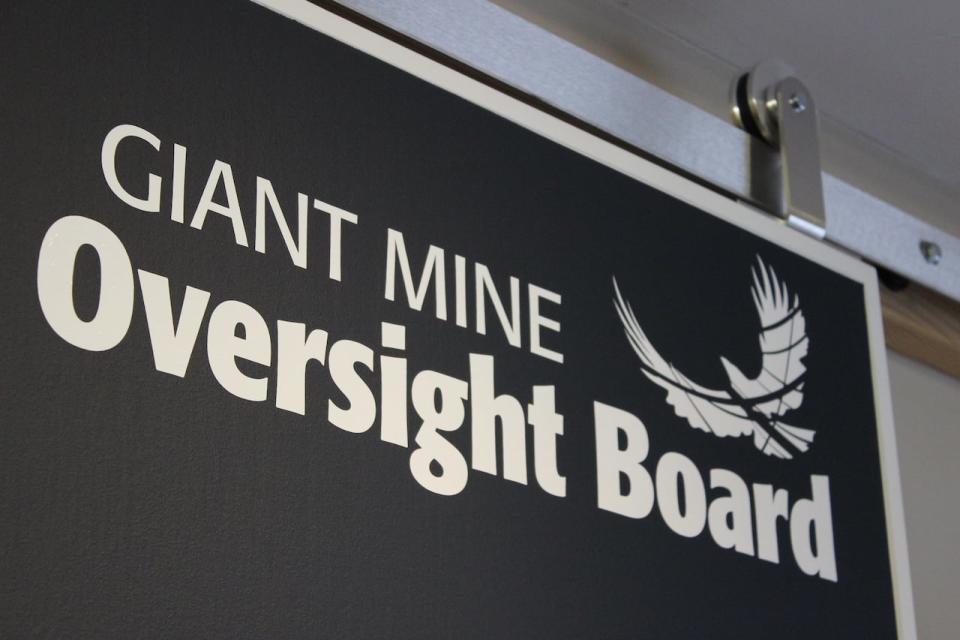
The Giant Mine Oversight Board, an independent body that monitors the remediation project, wrote in its recent annual report that it was concerned by the 'abandonment' of the remediation site during the 2023 wildfire evacuation in Yellowknife. (Liny Lamberink/CBC)
The GMOB wrote in its annual report, first reported by Cabin Radio, that it was concerned by the "abandonment" of the project site at that time. The board is an independent body that monitors the remediation project.
"GMOB has not received details on what measures were taken by the project team to secure and safeguard the site, remediation infrastructure and safety equipment," the report read.
The board noted that gates to the site were open for "certain contractors" and there was no security. It also asked for a comprehensive review of the project's emergency response and what it had learned from the evacuation.
"We've already done that," responded Plato. "We do risk assessment and review lessons learned, continually. That's part of our project management system. So yes, we've done it and we will continue to do it."
Plato said her team received "lots of praise" from the City of Yellowknife and the Government of the Northwest Territories for how it handled the evacuation, and for releasing its contractors and equipment to help build firebreaks.
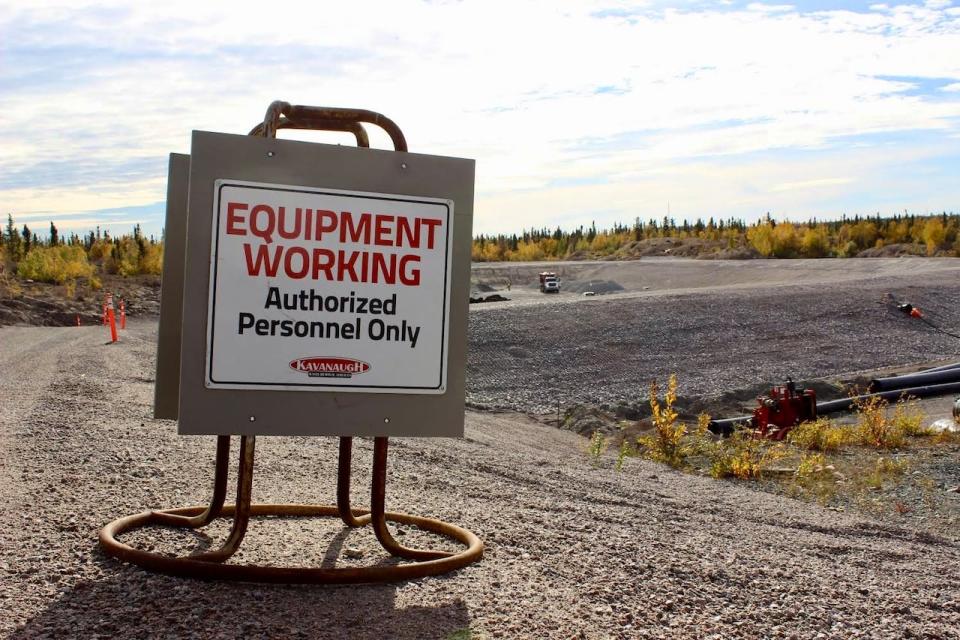
A sign warns of active equipment at unfilled landfill and sludge pond sites at the Giant Mine remediation site in September 2022. (Liny Lamberink/CBC)
She said they did a "really comprehensive risk assessment" and decided evacuating the site was the safest option for the people who worked there. She said there was very little water to manage on site, so they knew that wouldn't be an issue. Plato said they also did FireSmarting around the area.
"We weren't able to come up with a lot of areas for improvement, with the exception of having a bit better communication perhaps with the city," said Plato. "I guess my question back to them [Giant Mine Oversight Board] is, do they have suggestions? Because we thought we did a really good job."
Both Plato and the board noted that there were no incidents at the project site during the three-week evacuation.

 Yahoo News
Yahoo News 
